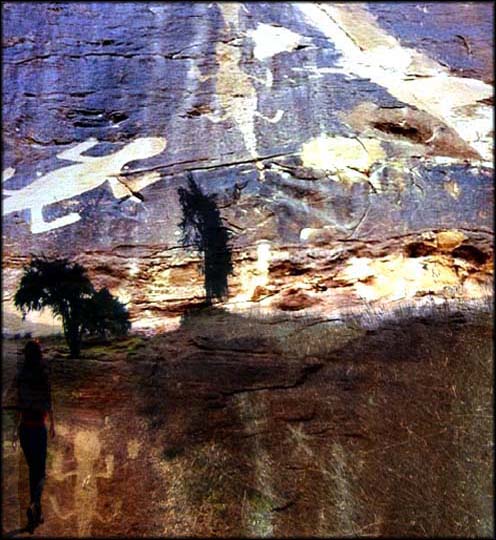Then we abandoned the caves we had painted and painted over thousands of years to build temples, "as a way to control lineages—to legitimate dynasties." Was it here we began to imitate, each other's discoveries and beliefs, leaving "technicians of the sacred"—shamans, mystics, artists—to illuminate and illustrate the visions we all neurologically share?
Walking forward toward the past, is it the historians' bricolage of hearsay, rumors, and the writing of colleagues? Or to become animal is to participate in movement, to stake out a path of escape in all its positivity, to cross a threshold, to reach a continuum of intensities that are valuable only in themselves, to find the paintings, songs, the gods who rise and dance as one's own "unconscious random creativity"?
And as he sees his remote feet and he chokes he
Holds his aching sides—
He can hardly bear it.
From simple circles and animal tracks in the showery north, to the "pecking through desert varnish on basaltic rock" of the dry Great Basin in the east, and the Chumash polychromatic rock paintings along the Santa Barbara Channel, "some of the finest in the world," California is as generous with its rock art as it is with its climates.
Why
would anyone want to spend a career studying ancient marks on
rocks?
An archaeologist
with a sense of humor told me that the nice thing about rock
art
is that you don't have
to dig for it. "You dig?" He laughed.
"Dirt
archaeology got my knees old fast, my back ached
from
bending over
data
collection units, and my eyes strained from sifting
for shards.
Now I can stand and pretend I'm seeing the past."
